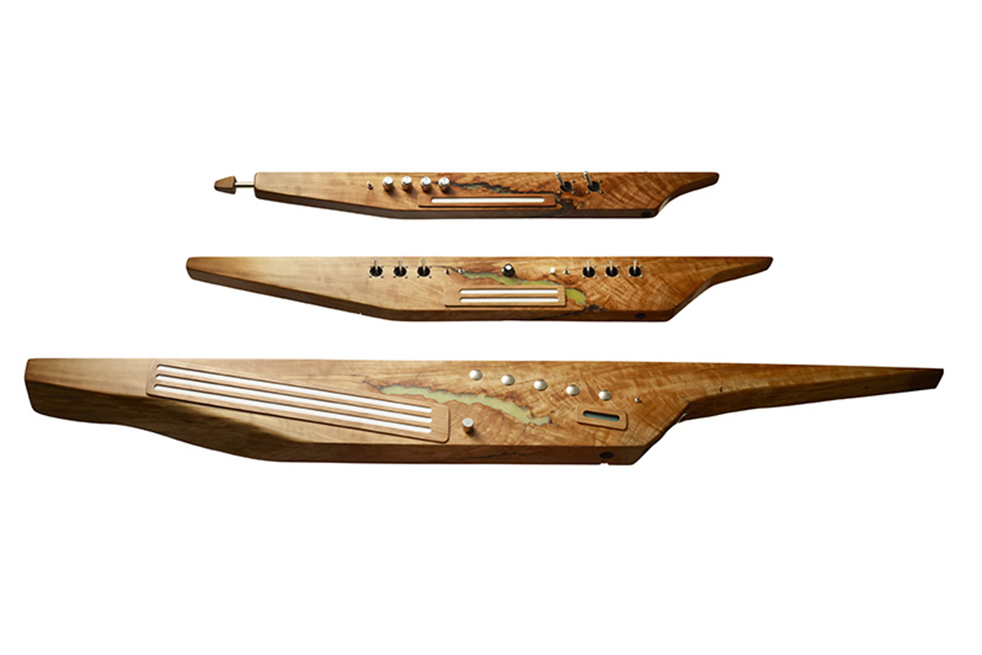They came from near and far. Some in designer suits, some in jeans and one in dirty overalls. They brought friends and family, playful children and tired parents. Within minutes, the seats were filled. Guests were forced to stand on stairs and balconies or sit cross legged on the floor. Music played lightly in the background and lights danced around the stark white walls. Everyone waited anxiously, not really knowing what to expect from the 2014 Margaret A. Guthman Musical Instrument Competition.
The Margaret A. Guthman Musical Competition is a nearly 20-year Tech tradition. It began as a piano design competition but has involved into a showcase of the most innovative, technologically advanced and sometimes simply odd instruments in the world. Hosted by the College of Architecture’s School of Music and the Center for Music Technology, the competition strives to “complement the rigorous research underway in the fields of music technology, performance, and education.”
The competition began right on time. Dr. Frank Clark, Chair and Professor of the School of Music, climbed up onto the stage and gave cheerful opening remarks that set the tone for the entire event. Rather than a cut-throat contest, the Instrument Competition was an accepting and awaiting platform for designers around the world.
While the finals were open to the public, preliminary rounds were closed. At the start, 85 teams from 22 different countries com-peted, which was narrowed down to the top eight finalists. Awards up to $5,000 were given to the first, second and third place winners. There were also “People’s Choice Awards” for “Most Unusual,” “Best Performance” and “Best Instrument.”
Narrowing down the most unusual instruments proved to be a difficult job for the audience. The 10 minutes the audience had to vote was distinct in its skittering, hasty whispered and indecision.
During the actual competition, though, the crowd was nearly silent. The only noise was the ever-changing but always entertaining music coming from the various instruments.
The first contestant called their instrument OP-1. It looked a lot like a normal computer keyboard, but instead of faint clicking-clacking, the keyboard sounded like the stereotypical retro video game and, at times, a wartime submarine radar.
Next was the Chitravenu guitar, which, according to the inventor, mixed “the acoustic South Indian music with Mississippi blues.” Basically, the instrument looked like a harp with a slide whistle on top, but the music was clear and quick.
There were several “guitars” in the competition, including the Adjustable Microtonal Guitar whose most basic feature was moveable frets. It sounded like multiple deep and resonant guitars playing at once.
Another, and admittedly stranger guitar was called the Tree Guitar. At first glance, it looked very much like a shoe box with antlers but the sounds coming from it grumbled and rumbled.
Another of the oddest instruments was the Tri-O, which had three discs which, when plugged in, spun and created music based on the area difference between them. It played Bach with impressive accuracy.
Another instrument was the AlphaSphere, which sounded more like a vibraphone than anything else, but was backed up by a drum beat. The AlphaSphere was like a ball of synth-pads and looked like a high tech soccer ball.
Sphere was the go to shape for many of instruments, including Elektrisk Oransje. It sounded like an mix between an engine revving up and an electric guitar.
Yet another oddly shaped and never-before-seen instrument was eMersion. From the audience’s seats, it looked like the player was holding two USB drives which somehow based on their distance from each other created seemingly every genre of music. One audience member described it in a whisper to himself as “electric wizardry.”
The judges claimed to have a more than difficult time choosing just three winners, but they eventually chose the Adjustable Microtonal Guitar as first place, OP-1 as second and Tri-O as third place.
The audience eventually chose the Tree Guitar as the “Most Unusual” instrument, the Adjustable Microtonal Guitar as having the “Best Performance” and AlphaSphere as “Best Instrument.”
The judges stressed how innovation had more weight then performance, mainly because creating an instrument is giving the gift of music to someone else. It is not just meant for one person to perform.
According to Christopher Moore, Tech’s Director of Athletic Bands and Coordinator of Percussion Studies, this years competition was “by far the most diverse and unique set of entrants [they] ever had.” He said the words that came to mind while watching the performances included “Wit,” “Ingenuity,” “Intensity,” “Beauty,” “Love” and “Passion.”
Another judge, David Zicarelli, stressed that, “…the very powerful performances were the result of the lives work of very dedicated and passionate people.”
The Margaret A.Guthman Instrument Design Competition is sure to continue for future years.
